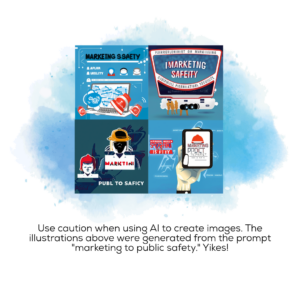 Recently, a consulting client came to us with a question: Why weren’t they getting leads from the webinars they kept conducting? The webinars were led by a knowledgeable and articulate product manager who did a great job of explaining the product. The product manager clearly identified the product’s benefits and gave plenty of reasons why buyers should purchase. But the leads weren’t pouring in.
Recently, a consulting client came to us with a question: Why weren’t they getting leads from the webinars they kept conducting? The webinars were led by a knowledgeable and articulate product manager who did a great job of explaining the product. The product manager clearly identified the product’s benefits and gave plenty of reasons why buyers should purchase. But the leads weren’t pouring in.
How could the company get their story to resonate with their audience? Here’s what we told them:
LET YOUR CUSTOMERS TELL YOUR STORY.
For the next webinar, we suggested that our client let satisfied customers do the talking about how great the product was working for them.
A few weeks later, one of our client’s customers, a large regional agency, presented the webinar. They shared their experience about how smoothly the transition to a new platform went and how the new technology benefited their organization.
The results? Our client saw an eight-fold increase in leads.
Letting customers tell your story isn’t limited to just webinars, by the way. It also works for e-mail, social media, trade shows, ads and pretty much any other marketing channel.
Whenever your company’s story is being told, remember these four keys to getting people to listen:
AUTHENTICITY. Particularly in the healthcare and public safety fields, prospects respond to authenticity. In the webinar example above, our client tapped into the need for authenticity by having its own customer do the presentation. Other keys to authenticity include doing your homework about what’s most important to your audience – i.e., the real issues they face.
PACING. All good stories have a distinct beginning (e.g., what was the customer’s problem?), middle (how did you go about solving the problem?) and end (how was the outcome a success?). It’s a formula that’s worked for thousands of years, and it will work for you, too.
KEY MESSAGING. If your idea of key messages involves rattling off a list of product features and canned talking points, you can expect to be ignored by today’s healthcare and public safety professionals. Rather, your key messages – the foundation on which all of your communications should be built – tell the story of how your product or service solves an important problem for a customer in a way nobody else can.
SIMPLICITY. When your story is being shared, the goal is to give prospects and customers a reason to continue the conversation with you. So don’t overwhelm them with details; make your point, and then focus on what they need.
Telling your company’s story, rather than just listing product features, sets you apart from the rest. Having your customers tell your story is especially impactful and allows others to see your organization through the eyes of their peers.
Related Posts
-
Selling to public safety is not the same as selling in other industries. Discover 3…
-
So today I realized I’ve been to about 250 public safety conferences over the past…
-
The RedFlash team was recently presented with an interesting opportunity: We were asked to help…








 The RedFlash Group is a GSA Contract Holder under Schedule 541, Advertising and Integrated Marketing Solutions
The RedFlash Group is a GSA Contract Holder under Schedule 541, Advertising and Integrated Marketing Solutions